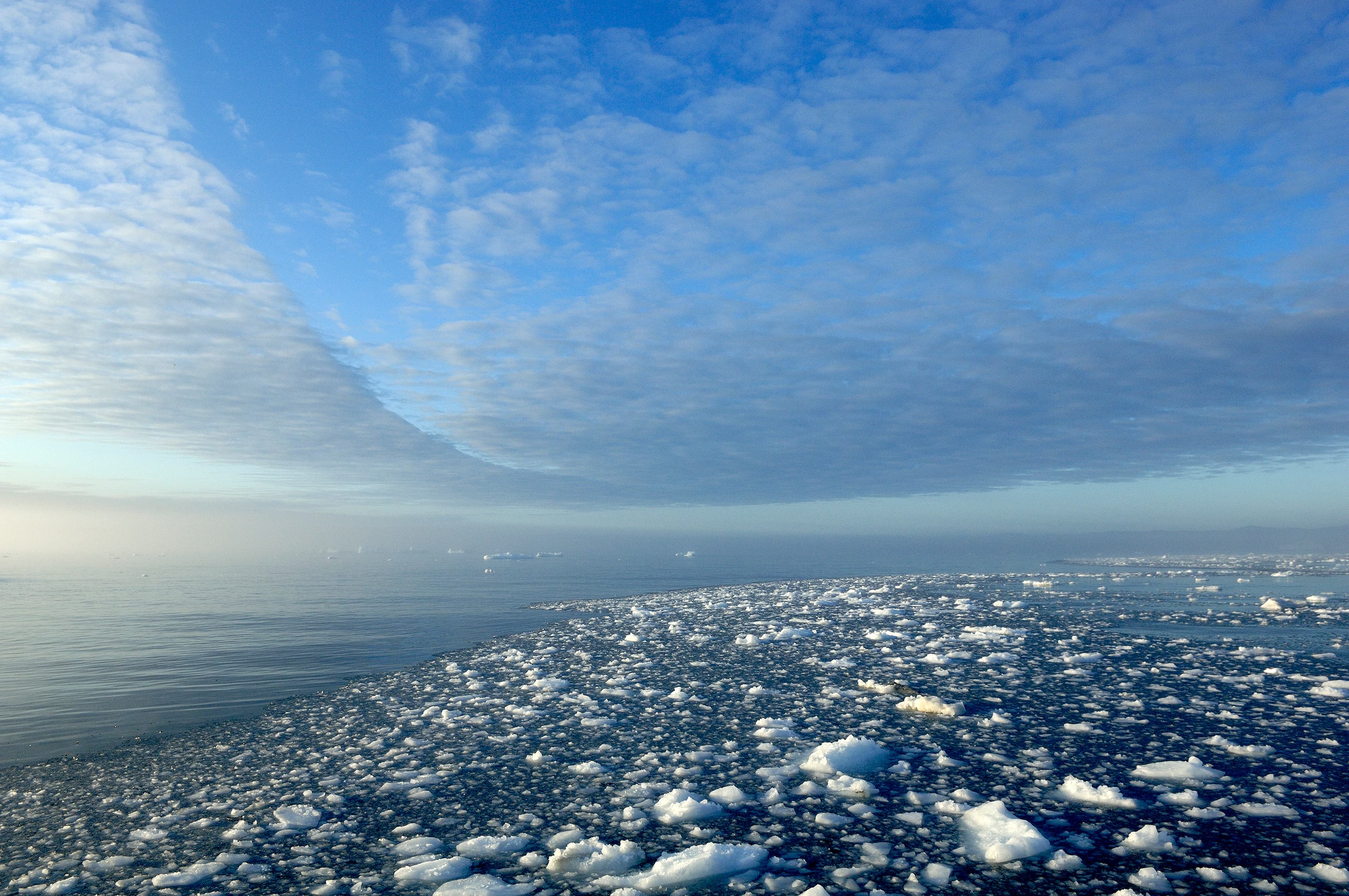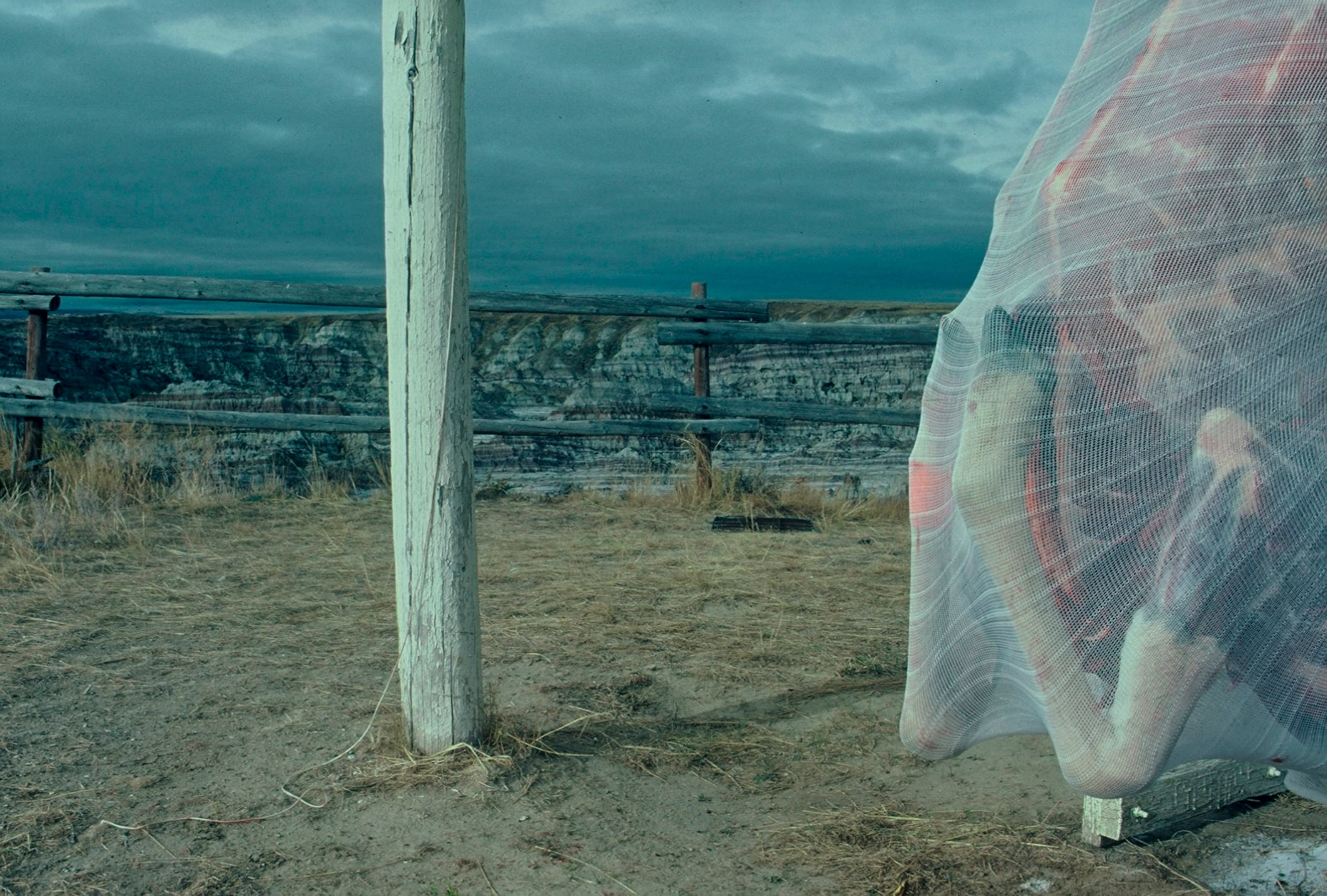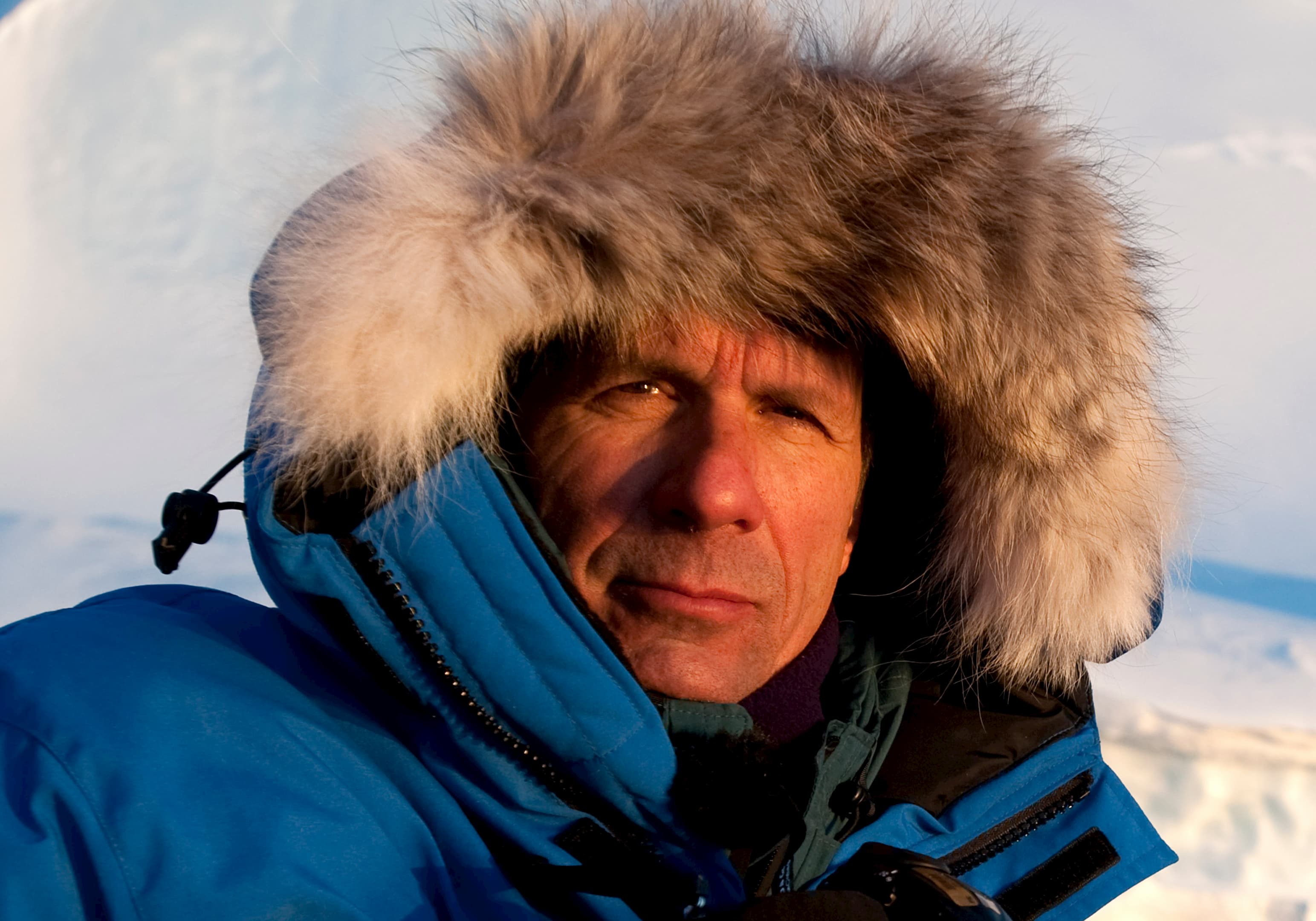Warning Signs
INTERVIEWER Andrew Steiger PHOTOGRAPHY James Balog
James Balog is an innovator of creative communications. He has been documenting the collision of humans and nature with convincing displays of urgency and awe shock for decades. Balog is the founder of the Extreme Ice Survey (EIS) which gave way to the acclaimed documentary ‘Chasing Ice’ in 2012. While James and his team gave a visual voice to the real time effects of climate change on the world’s retreating glaciers - he hit a nerve. His most recent film ‘Human Element’ is moving through the film festival circuit now and is Balog’s latest attempt at showing the world the impacts of human caused climate change. Convincingly he assures us that environmental issues are far less ‘esoteric’ than the average citizen may believe. From southern coal mines to endangered species portraits, from melting cathedrals of snow and ice to asthma ridden school systems - James Balog is capturing it all. But how can someone who grapples with some of the most existential crises of our time, continue to show up and give us so much hope?
ANDREW STEIGER: The natural story arch of your career seems to have progressed in such a way that every project informs the next. When you were shooting ‘Wildlife Requiem’ (a photo story on trophy hunting) back in the 80’s what was it that drove you to tell the story this way?
JAMES BALOG: For three or four years after I started making pictures I started to realize that there was a real story emerging between the collision of humans and nature. It felt like it wasn’t enough for me to just create pretty portraits of landscapes. There was so much more going on. This is what was affecting me at the time, this feeling that nobody was really talking about. I was just trying to make pictures of things that reflected that feeling I got. Before I did the trophy hunting series, I started with a story about logging in the Redwoods. That was my first initial attempt at the conversation, the way I saw it. It just felt like a natural pull but I had no idea where it was going at the time.
AS: In regard to coming into your own as an artist and as a storyteller - how important was validation from outside sources during those initial stories? What did it take for you to say to yourself you know what... I’m on to something here! Was that just an internal awareness or did that come from outside sources as well?
JB: Oh no, I was so insecure when I was a young man. (laughs) Oh geez it was paralyzing at times. I still doubt myself. But a lot of that has gone away. You know, you absolutely need support and feedback from others that’s how you grow. In fact, just today I was having lunch with a scientist colleague of mine who use to work at NASA, and I shared with him a speech that I’m preparing to give in Washington (DC) in December. I knew the words were good but it was important to have them read by someone from the community for which I was speaking to make sure I got it right.
AS: You orbit around very charged subject matter, how do you retain the wherewithal to go into these areas and tell their stories? How do you manage to stay positive?
JB: I’m very interested among other things, in how human power and influence flow through the world. That’s at the root of what‘s going on with the environment. What happens to the environment isn’t just esoteric and independant, its integrally connected. There’s no shortage of curious fuel to keep me going. It’s more a question of emotional stamina and financial stamina, I’m not independently wealthy. I can’t just do whatever i want. I have to find the financial fuel, to keep things going and that can be difficult and that can slow you down. I challenge myself to not do anything until I think I’ve got the glimmer of a clever idea, a new idea about a subject.
Once in a while I’ll go out and say I don’t have a fricken idea what I’m doing. I’m just going to go, and show up and try and make a picture and hope I find something interesting. That’s what happened with that coal mining equipment series that was in the film (Human Element) I really didn’t want to do that trip at all but my colleagues on the film said no we really have to go interview your father so just show up well go look at some of this equipment and see what we find. And it turned out to be you know, amazing.
But generally speaking, I want to have some kind of thing in my head about how I’m going to do it differently, or more creatively or something, some kind of a treatment around a subject. And that can be kind of paralyzing. And sometimes I recognize that I’ve kind of sabotaged myself. In saying I have to have this thing previsualized. That’s what Ansel Adams use to claim he would try and do which I don’t think was true. But he would pre visualize things in terms of the way the print was suppose to look. He’s standing out in space and he’s exposing in certain ways to make the print look a certain way but he wasn’t saying, I’m not going out to shoot half dome until i know what my new creative angle is going to be, but I do that to myself which is maybe stupid. You really do have to have the visceral three dimensional real world encounter with something in many cases in order for the creative light bulbs to go off. You just have to show up. You can’t sit around staring at the ceiling imagining things, you have to go and see how your heart works, and how your eyes work when you get out in space.
AS: Where do you think the conservation movement is succeeding? Where is it falling short?
JB: First I’ll talk about where it’s succeeding because I think regardless of its shortcomings, it’s important to recognize what‘s working. There are now a lot more people contributing to this conversation and that’s extremely important. People are continuing to show up.
Where it’s falling short - it’s too narrow focused at times. Too oversimplified. You know it’s like environmentalists who objectify and villainize people that work in the coal industry. They’re just people. I think more compassion in that regard would help tremendously with overcoming our differences.
AS: A big contribution you and your team gave to the climate change conversation was the Extreme Ice Survey back in 2007, through which you were able to give us for the first time a digestible visual experience with glacial retreat in real time at terrifying speeds. How has EIS changed since inception and does it still have unrealized potential?
JB: You know, I thought it would be three winters and two summers worth of work. And we just finished year number twelve on field work. So that’s the BIG change. It turned out to be not so short. It turned out to be already now four times longer than it was originally intended. It wound up covering a lot more territory than we expected it would. We had cameras in Antarctica for four or five years until just this year and now we’ve kinda handed the cameras off to a different group and we work with them but we don’t have such obligation to manage the process. We also went to Asia. We had five cameras around Mt. Everest for a while until there was a problem with the permits. So, its expanded geographically. There’s been a lot more cameras than we ever anticipated. You know I started with twenty-five cameras in the field we were up at forty-three at one point, we’re back down around eighteen to twenty right now. So, that keeps evolving.
One of the big changes has been that in the beginning there was absolutely no expectation or guarantee that the system would work. We didn’t know what the glaciers would do, I didn’t know how I would finance it, and I didn’t know what the public reaction would be if I found something interesting with the glaciers. It was all an unknown. It now seems obvious. You look back at it and it was obvious the glaciers would retreat and it’s obvious people would care, but it – wasn’t obvious at the time.

AS: Well I guess that goes back to what it means to pull at those intuitive strings within yourself and really just throw yourself into it sometimes and trust that, it’s gunna turn into something and one way or another you’ll figure that out once you go through the process.


JB: Yeah– that’s the only way this stuff works. You have to be committed. You just have to jump off the high dive and lots of times you don’t know if there’s any water in the pool. And you just have to do it. And because of that uncertainty that’s why most people don’t do this kind of work. You know, there’s an enormous number really talented young photographers working right now. I call them young because I’m now an old man but guy’s in their thirties who are doing spectacular work and they’re not doing this kind of creative exploration because it’s much easier to wait for the phone to ring and go do an assignment for some commercial client like Red Bull. It pains me that the best and the brightest of the young generation are having their time and their energy used up shooting commercial stuff now. It’s totally a shame.
AS: Well I think you nailed it. There’s all these other worlds that come into effect regarding why that commercial intention became the end all be all. If you go back to what you were saying about human power and influence, the economic motivations or the societal expectations for monetary performance and “commercial success” explains why that becomes their world of conversation. We’ve created this system in which that’s just the way you’re expected to do things. That’s how you pay the bills, that’s how you buy the nice thing that’s just sort of the life you live. Versus, a more innovative path, that is trying to creatively solve problems. I think that’s a brave line that I think more people need to be willing to cross.
JB: I remember this very clearly, it was 1981. I was 29 years old and I was a greenhorn! You know? I didn’t know this photographic field very well but I knew enough of it and I knew enough of what had been done by the really great guys before me the Eugene Smiths to be able to look at the world and look at the opportunities that were in the magazines, that was where I– you know– had set my guidestar, to look at those opportunities and I said to myself “the best work I can do will not come from assignments from magazines.” I must earn money from the magazines and create the space in my head and in my time so that I can go and do the deeper, creative and more meaningful work that I have in me. I can’t be trapped in these assignments.
AS: The Extreme Ice Survey is a great example of one of those creative projects, born from necessity and outside the influence of anyone other than internal determination to tell the stories you felt compelled to tell. With the success of ‘Chasing Ice’, is there still unrealized potential for storytelling within this space of filmmaking?
JB: That’s something that we roll around quite a bit I mean, really, we’ve defined for sure, what the impact of climate change is on ice. And we could’ve stopped five years ago. But at this point we consider that we’re now collecting a historical archive. Changes in our landscape. That’s it. And that’s the core motivation. There’s always need to keep showing those pictures. I mean christ, I’ve got like five shows in the next month where I have to show those pictures because some new audience always wants to know– what does it look like? So if we do an actual sequel to ‘Chasing Ice’, we are almost certainly going to do a component about Arctic sea ice this time which is something we did not touch because, that’s not what our time lapse cameras were all about. I thought about sea ice but I couldn’t figure out a good way to do it. And now just as of this summer I think I figured out a good way to tell that story. So I really would like to see us go forward with a remake in some fashion of ‘Chasing Ice’ and tell the sea ice story– because that’s a big one.
AS: I’m definitely a believer in the creative arch in that every piece of work informs the next– but could you have even fathomed that your process would’ve evolved this way? Especially from the time you were doing deforestation images and trophy hunting photos?
JB: No! No, no, no, no, oh my god you would be possessed by insanity if you ever imagined such a thing. It’s absolutely impossible to project the trajectory that my life and my work has taken for the past 40 years. Hell I couldn’t have projected the past 5 years, 10 years, 20 years. Oh yeah. No. You just have to show up and take one step after another - I look at it as being alot like, when you’re at the base of a really big mountain like Denali or a Himalayan Peak, you’re down there in the valley and you see that summit way up there and you go - ohhh god, that’s too far... I’ll never get there. And then you kind of gotta shake yourself by the scruff of the neck and you say now wait a minute, it’s not about all that distance. It’s about that next five feet in front of you. Move your one foot, move it forward, then take your next foot move THAT forward. And you take it one step at a time. And eventually, you get to the summit.

AS: How wonderful.
JB: One other analogy I want to give you is because it has a great bearing on some of your earlier questions: A few years back I was at a meeting with a guy I had a connection with through the climbing world. Way back in the seventies, we hardly knew each other but we had been on the same ice climb– on opposite sides of the ice climb together. And he had somehow followed my career and I had followed his because he went on to be the founder of Black Diamond. Pete Metcalf. So we didn’t see each other for thirty or thirty five years and he saw me at this meeting in Telluride and he said I’ve been following you and I’m here to tell you– do you know why you’re able to do what you do? And I said no, I have no idea, I have no idea– why you would know! He said, because you are a mountaineer. ⬩